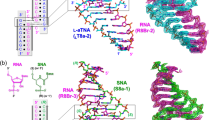Abstract
Members of the homologous series of alkanediol dimethanesulphonates of general formula H3C.SO2O.(CH2)n.O.SO2.CH3 have been tested for their ability to produce DNA interstrand crosslinking and DNA sequence selectivity of guanine-N7 alkylation. In a sensitive crosslinking gel assay the efficiency of DNA interstrand crosslink formation, dependent on the ability of the alkylating moiety to span critical nucleophilic distances within the DNA, was found at 6 h to be 1,6-hexanediol dimethanesulphonate (Hexa-DMS) (n = 6) greater than methylene dimethanesulphonate (MDMS) (n = 1) greater than 1,8-octanediol dimethanesulphonate (Octa-DMS) (n = 8) greater than Busulphan (n = 4). The DNA interstrand crosslinking produced by MDMS was not due to either of its hydrolysis products, formaldehyde or methanesulphonic acid (MSA). In contrast the extent of monoalkylation at guanine-N7 as determined by a modified DNA sequencing technique was found to be Busulphan much greater than Hexa-DMS = Octa-DMS, with a sequence selectivity somewhat less than that of other chemotherapeutic alkylating agents such as nitrogen mustards. MDMS at high levels induced a non-specific depurination as a result of the reduction in pH resulting from MSA release. More strikingly MDMS (and MSA) produced a single strong site of guanine reaction (depurination) in a guanine-rich 276 base pair fragment of pBR322 DNA in the sequence of 5'-ATGGTGG-3'. This was observed when non-specific depurination was negligible and was not seen with formic acid. Thus structurally similar alkylating agents can differ in their type and extent of DNA monoalkylation and interstrand crosslinking, and in some cases (e.g. MDMS/MSA) produce reactions with a high degree of selectivity.
This is a preview of subscription content, access via your institution
Access options
Subscribe to this journal
Receive 24 print issues and online access
$259.00 per year
only $10.79 per issue
Buy this article
- Purchase on Springer Link
- Instant access to full article PDF
Prices may be subject to local taxes which are calculated during checkout
Similar content being viewed by others
Author information
Authors and Affiliations
Rights and permissions
About this article
Cite this article
Ponti, M., Souhami, R., Fox, B. et al. DNA interstrand crosslinking and sequence selectivity of dimethanesulphonates. Br J Cancer 63, 743–747 (1991). https://doi.org/10.1038/bjc.1991.166
Issue Date:
DOI: https://doi.org/10.1038/bjc.1991.166
This article is cited by
-
DNA alkylation and interstrand cross-linking by treosulfan
British Journal of Cancer (1999)



